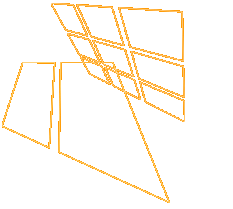| fun | | poze | | forum | | contact | prima pagina | Liceul 'Stefan Odobleja' Craiova |


|
Ora de anarhie Many computer users perform their own hardware upgrades, and a distressing number of these result in insufficient damage to the system. Destroying your own computer is every user's right and is the pattern of behaviour expected by the manufacturers and, especially, repair personnel, whose very livelihood is put in peril by those users who perversely persist in correctly upgrading their equipment. This article will explain to you, the user, the most common ways by which you can cause your computer to cease to function. Follow the instructions carefully and you will shortly find yourself making appropriate contributions to the all-important service sector. First, it is essential to be incorrectly prepared When removing screws from the back of an ordinary clone case, ensure that you extract every screw in sight, not just the ones around the edge that actually hold the case on. This will, with any luck, cause the computer's power supply to fall off inside the case and cause serious damage, before you even have to take off the lid. Leaving one fastening screw still done up in the corner and then attempting to wrench off the case may cause significant damage to the metalwork, but this is generally easily bent back into shape and not very expensive to replace. You can do better. Fortunately, there are a plethora of computer case designs, and a gratifying number are fiendishly difficult to take apart and, especially, reassemble. To maximise the chance of damage, ignore any locking tabs and slots, don't worry about pinching cables in the case, and make sure you push really hard. When replacing screws, remember to tighten everything as if the computer were
a major structural component of the Sydney Harbour Bridge. Overtightening screws
increases the chance of reaming the heads, and the extra frustration involved
in removing super-tight screws increases the chance that someone will give
up and turn the machine over to a professional. Use of an electric screwdriver
makes screw destruction easy for anyone. Static Is Your Friend Unfortunately, static discharge damage is actually a fairly rare cause of computer problems. On the bright side, however, a discharge as low as 200 volts is sufficient to destroy a chip, and this level of charge can easily be accumulated in just a few steps on carpet. Static discharge can only be felt when the charge gets up around the 2000 volt mark, so it's possible for a truly adept user to unknowingly destroy several components in one session. Old-fashioned belt-drive vacuum cleaners are quite efficient static electricity generators, so cleaning computer componentry with one is an excellent way to bolster the income of a service engineer. Newer cleaners are still good at accumulating static, and are also quite powerful enough to seriously damage fragile components with sheer suction. Air force For truly powerful air-blasting, though, the discerning user will have to employ the services of an air compressor. These can be rented cheaply from many equipment hire shops, and as well as their greater power (which can snap a RAM module and its socket right off the board) offer the added bonus of high-speed water delivery, provided of course that the user makes sure not to use the condensation drain valve provided for less focussed operators. Get it wet! Killing chips Inserting and removing Pin Grid Array (PGA) processor chips in Zero Insertion Force (ZIF) sockets is unlikely to break anything, unless the user somehow manages not to operate the locking lever and forces the issue. PGA chips in old-style sockets are easier to damage; PGA pins are annoyingly hard to bend, but the forest of pins under the processor gives many chances to bend just one and make the chip uninsertable. If the computer is an 80486-based system, the Central Processing Unit (CPU) can be plugged into its socket in more than one way. One corner of the processor is bevelled and the matching corner of the socket will also be marked, but if these markings are disregarded - or if the user decides instead to line up the printing on the CPU with that on the motherboard - then the processor can be inserted in one of the three other alignments. This makes the chip's destruction, possibly with the emission of smoke, quite likely. Intel regrettably made processor misalignment impossible with the introduction of the Pentium series, unless of course the enterprising user is equipped with a mallet. This never happens. Chips are much less likely to be damaged if a small screwdriver is used to lever each end in turn up a little at a time, until the whole chip comes free at once. Those who have purchased stock in chip makers recommend against this strategy. Inserting Single Inline Memory Modules (SIMMs) should be relatively simple, since SIMM sockets require one only to insert the module at an angle, then swing it upright until the locking clips click into place. Fortunately, many PCs are cramped inside and have at least one SIMM socket fouled by the power supply or other metalwork, making it more difficult to insert a memory module in that socket without damaging it or the socket. Inserting modules backwards (even though they are designed not to fit that way), jamming them straight in vertically and, of course, using plenty of force, increase the chance of a misadventure. Bugger the BIOS! If a flash BIOS is "flashed" with the wrong data - preferably a BIOS for a completely different motherboard, or, if the flashing software will accept it, even some randomly selected file; an MP3 of William Shatner's "Mr Tambourine Man" is ideal - the motherboard will, upon restarting, utterly fail to do anything useful until its BIOS chip is physically removed and re-burned with correct data. Interrupting the flashing procedure will produce the same results. If the BIOS is socketed, exchanging it for a working one is disturbingly easy. Fortunately, many current BIOS chips are soldered to the motherboard, and cannot be economically replaced. The iniquitous invasion of motherboards with built-in BIOS backups must be stopped at all costs, lest their terrible reliability paralyse the industry. Cables, connectors and calamity If the pin header on the motherboard isn't "shrouded" - surrounded by a plastic box to correctly align the plug - the intrepid user can quite easily connect the plug in such a way as to miss one row or column of pins. This can very excitingly change the details of the connection being made. When connecting an older style, "AT" power supply to a motherboard, the two-part power connector offers a marvellous opportunity for destruction. Make sure at all costs to avoid the plug configuration shown below This configuration, with the black wires towards the centre, will cause the computer to work perfectly. Reversing the two plugs so that the red wires are towards the centre will, gratifyingly, destroy the motherboard. Some manufacturers appear to have temporarily abandoned their sanity and made AT power supplies that will not work when connected incorrectly. Such supplies are, of course, to be avoided if at all possible. Fortunately, modern motherboards have introduced a new way to blast tracks clean off the board. On-board fan connectors have three pins, and two adjacent ones are the positive and ground supply. Mistaking one of these connectors for a motherboard configuration jumper allows the adept user to slip a jumper block onto the fan connector and short the positive pin to ground, which can and will burn out traces on the motherboard and render it useful only as a wall decoration. Motherboard manufacturers are clearly aware of this possibility, and some assist by labelling, say, a three pin CMOS clearing jumper block "JP2", and marking the CPU fan connector "J2". The use of the normal motherboard annotation font (one point Flyspeck Sans Serif) makes misidentification simple even for those with perfect vision. Plugging and unplugging peripherals that attach to computer ports while the machine is turned on is unlikely to damage the peripherals and not much more likely to damage the computer - plugging and unplugging cards inside the computer when it's on is a much better way to damage things. If, in the course of diagnosing a problem, you have a hard drive out of its assigned bay and resting on top of the open machine, remember that the logic board under the drive can generally be shorted out easily by chassis metalwork and position the device accordingly. PSU pulverisation In comparison, the more pedestrian sport of dropping screws into the PSU fan in hopes that they will cause a dramatic short circuit is scarcely necessary. Particularly in view of the fact that the fan often spits them back out. Remember - slapdash, ill-informed, incompetent work is what's expected of
you. Don't let the industry down.The taiwanese people live off what you buy.
|
© Copyright 2003 dejayfx addictive design